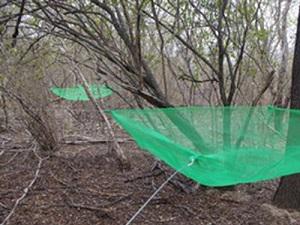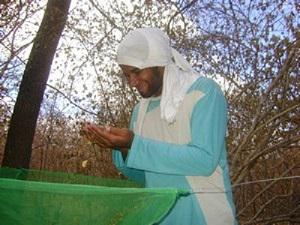Elâine Maria dos Santos Ribeiro
Our goal is to respond how chronic human disturbances affect diversity patterns of Caatinga plant communities and processes such as seed rain, germination and establishment.
Understanding patterns of diversity and processes which maintain habitats that suffer from human impacts is challenging, but it is necessary for nature conservation. The Caatinga is a mosaic of tropical dry forests and shrubby vegetation located in Northeast Brazil. This region has high poverty index and a marked seasonality (only 3 months of rains about 569 mm), which has led the rural residents to use the natural areas of Caatinga for extensive grazing of goats and introduce temporary farming (corn, beans, onion, watermelon and cassava).

Seed traps.
In addition, forest resources are used for medicinal purposes, animal and human feeding, and wood collection for building and cooking. In the last two years, some of these rural areas have been also used for mining, train line opening, and river transposition. This scenario is very common in Northeast Brazil, many areas with natural vegetation are facing these kinds of uses and most of them are private lands, only 1.2% of the Caatinga are public areas of integral protection. So, understand how these particular ecosystems respond to human disturbance is crucial to deal with biodiversity impoverishment and keep the life support to people who depend on the rural areas.

Monitoring seed traps.
This work will identify, for the first time, how the species, functional and phylogenetic diversity of adult and sapling woody plant communities are maintained throughout a gradient of disturbance. This integrative diversity approach will not only allow us to know how we are losing species, but will also reveal the magnitude of the shifts in ecosystem services and plant evolutionary history. We will answer how important ecological processes such as seed rain, germination and establishment of new individuals, act as a barrier for natural regeneration in these disturbed sites. The data will help us to identify which species can persist in most disturbed sites and, at same time, are used by the people.
With this answer we can make reliable recommendations for the protection of rare and overexploited species. We intend to analyse the data with scientists and restoration organizations, and use our results to support conservation and restoration projects in the Brazilian Caatinga.